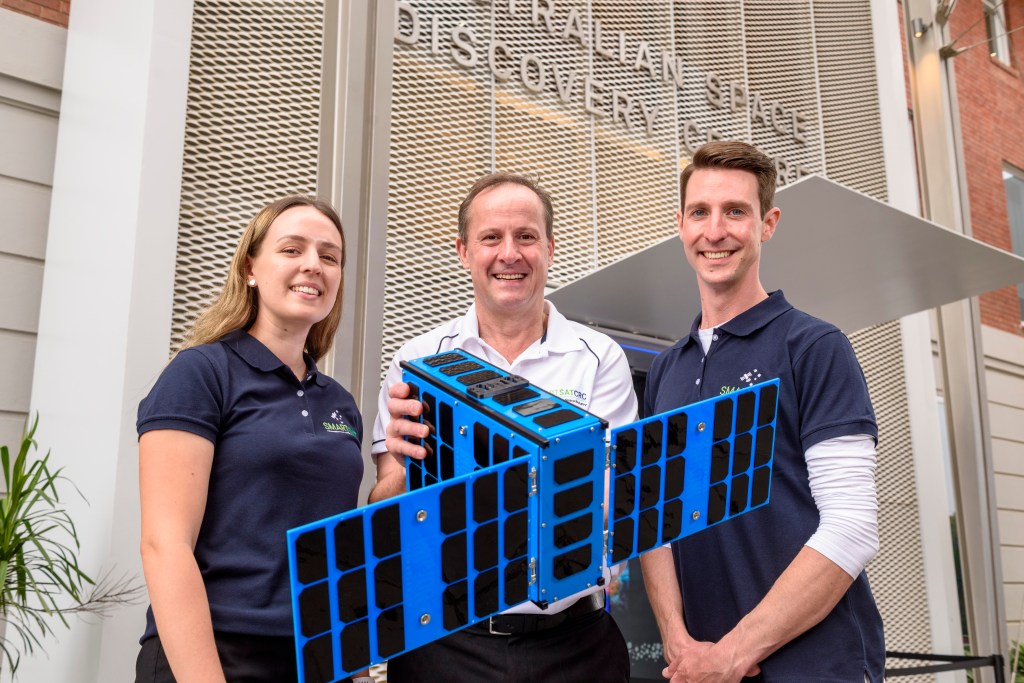The South Australian government’s ‘Kanyini‘ satellite is now in orbit, having launched on a SpaceX mission from Vandenberg Space Force Base in California.

It’s a $6.5-million mission bringing together some of Australia’s most notable space companies. The Kanyini satellite project is led by SmartSat Cooperative Research Centre on Lot Fourteen in Adelaide. It was built by South Australian satellite manufacturer Inovor Technologies and is connected and powered by Adelaide-based firm Myriota.
“The launch of Kanyini is a significant milestone and pivotal step forward for South Australia’s space sector, setting us up for further success on a global stage,” says SA Treasurer and Minister for Defence and Space Industries Stephen Mullighan.
“We are excited for Kanyini to unlock more opportunities for research and development of innovative, sovereign Australian space technologies.”
Kanyini established communications with the Inovor Technologies operation centre on Lot Fourteen immediately after orbit August 17. Since then, 200,000 points of telemetry have been logged, all of which look positive, according to project officials.
Now that it is launched and connected earthside, Kanyini will be instrumental in the following projects:
- Delivering critical sustainability and climate data to government and research institutions;
- Detecting bushfires 500 times faster than traditional methods;
- Developing predictive AI for landslides and flooding through Queensland University of Technology and the European Space Agency;
- Sensing urban heat islands in South Australia for the SA Department of Environment, Water and Greening Adelaide.
Kanyini will achieve these objectives through the two payloads it has taken into space. The first is the HyperScout 2 Flight Model hyperspectral imager, – “a compact imaging payload that will provide details Earth Observation imagery to support research into areas such as crop health, forestry, inland and coastal water management,” according to mission documentation.
The second payload on board Kanyini, is a Myriota IoT Space Services device that will “provide the data transfer capability for the satellite, sending data from IoT devices and sensors on the Earth’s surface to the satellite.”
Dr David Haley, co-founder and CTO of Myriota, says Kanyini will be instrumental in delivering critical field data to users across a range of key industries
The two payloads working together enable critical space data to improve SA emergency services, environmental and water quality monitoring, and bushfire mitigation.
“This launch is a testament to the collaborative efforts of the Kanyini team in preparing the 6U CubeSat and our onboard IoT payload to withstand the harsh conditions of space,” says Haley.
“This project will inspire talented Australians to pursue a career in the space industry as engineers and future space leaders.”
Stephen Mullighan, SA Treasurer
The launch also has significance to the state’s school students, who in 2021, were given the opportunity to submit names for the satellite. The winning nomination was sent in from Year 11 students at Findon High School.
“Kanyini is a Pitjantjatjara word that describes the principle of responsibility and unconditional love for all of creation,” the mission statement reads.
“The students were inspired by the connection of Kanyini to how the satellite data would be used to tackle real-world problems.”
Look back on the week that was with hand-picked articles from Australia and around the world. Sign up to the Forbes Australia newsletter here or become a member here.


